10 Years 10 Films (10Y10F) is a project to display embedded YouTube selections of cinema history. This is Decade Six of a series that gives the viewer a quick time-lapse view of how movie technology and style has developed throughout the world – one clip each year – from 1888 through 2017, starting with the foundations to see how filmmakers build or deconstruct them.
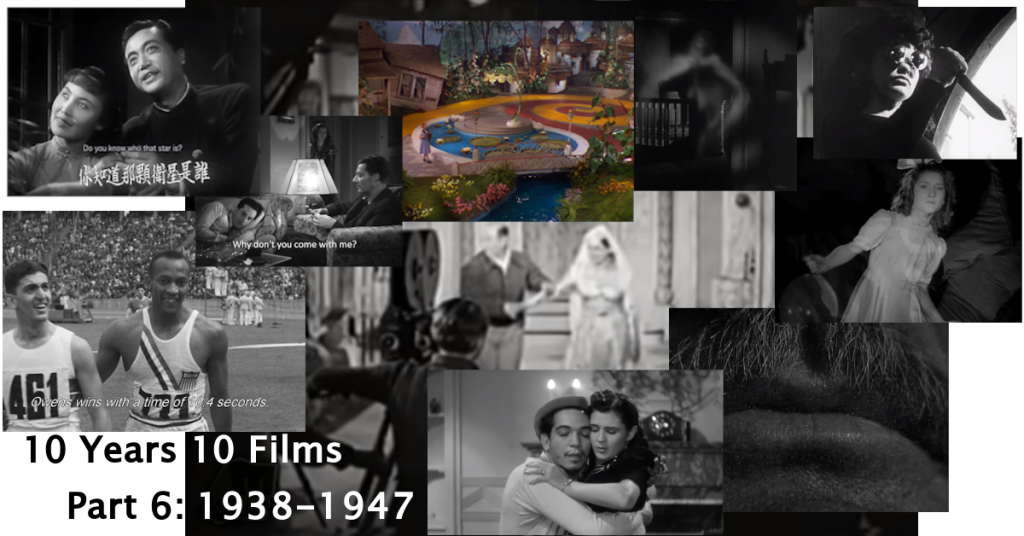
Most people on the street probably couldn’t name any hit movies from the fifth decade of cinema (1928-1937), but nearly everyone can bring one to mind from the sixth decade. In addition to the 10 films chosen for this section, there are dozens of films, cast, and crew that people still admire from 1938-1947. I’ve intentionally omitted big names like Bette Davis, Liz Taylor, Cary Grant, Jimmy Stewart, John Ford, and the rise of Hitchcock from my (top ten) picks as they’re just too obvious to highlight for 10Y10F! The two big American movies that did make the list star Judy Garland (The Wizard of Oz) and Orson Welles (Citizen Kane).
Since I haven’t gotten to focus on cartoons and ongoing series like Our Gang (aka The Little Rascals), I wanted to take a moment to highlight the variety of short subjects being produced at this time. One coincidence worth exploring is the nearly-simultaneous release of WB’s “Rhapsody Rabbit” and MGM’s “The Cat Concerto” – check out Mad Munchkin’s video detailing the controversy of both cartoons using Liszt’s “Hungarian Rhapsody No. 2.” Another development worth mentioning are Soundies: essentially music videos, usually highlighting African-American performers. You can also find short news clips and documentaries from the time, like the annual “Cavalcade of the Academy Awards” (1940) and “Screen Snapshots” series depicting real-life Hollywood topics (1939). And last but not least, we have the first superhero cartoons, like Paramount/Fleischer’s Superman (“The Mad Scientist” 1941).
With resources focused on the Second World War (1939-1945), technical progress in the movie industry was stagnant. Only 5 of the 28 films on my full list from this decade were in color, and the prominence of widescreen and stereo was still a long way off. Even so, Hollywood was making record-breaking profits in 1946, and the Academy Awards did introduce color cinematography and art direction categories (1939-1967). The quality of Mexican cinema was also at an all-time high, with Argentina and Egypt on the rise. But in America, strikes and a federal antitrust suit against the major studios resulted in a new structure of smaller theater chains in the late 1940s. We’ll look at this shakeup of the studio system in Part VII.
Click on the Expand arrow for more details and additional films of note for that year. Now that we’re past the date of most films being in the public domain, I’ve linked the YouTube videos directly to the official trailer/rental whenever possible. Other disclaimers and an embedded YouTube playlist of the 10 films highlighted here are at the end of this post.*
10Y10F Series:
I 1888-1897, II 1898-1907,
III 1908-1917, IV 1918-1927,
V 1928-1937, VI 1938-1947,
VII 1948-1957…
/ Collapse All ˄
1938 – Olympia [clip] (Riefenstahl; Germany)
An epic two-part documentary covering the 1936 Berlin Olympics. Leni Riefenstahl worked with the Nazi party for over ten years, producing propaganda films. Her technical innovations and neoclassical presentation were unprecedented, which is evident from the very opening of Olympia. Ironically, these games were meant to glorify the “Aryan race” but instead shined a spotlight on the dominance of African American Jesse Owens, in the track and field events. Parts One and Two available for purchase on YouTube. WATCH RESPONSIBLY and do some background research before showing her films. Expand
 Olympia Part One: Festival of the Nations (Olympia 1. Teil – Fest der Völker), 127min. Olympia Part Two: Festival of Beauty (Olympia 2. Teil – Fest der Schönheit), 104min. Restoration from 4K-scan available in Criterion’s 2017 100 Years of Olympic Films boxed set.
Olympia Part One: Festival of the Nations (Olympia 1. Teil – Fest der Völker), 127min. Olympia Part Two: Festival of Beauty (Olympia 2. Teil – Fest der Schönheit), 104min. Restoration from 4K-scan available in Criterion’s 2017 100 Years of Olympic Films boxed set.
Other film(s): Dangerous to Know (70min. Robert Florey. Paramount. USA.) A racketeer (Akim Tamiroff) rules the town and his mistress (Anna May Wong) until he tries to win over the town socialite (Gail Patrick). One of Wong’s comeback Hollywood films after being disappointed by one-dimensional stereotypes of Chinese-American characters for over a dozen years. Her storied career is well worth researching.
Bringing Up Baby [trailer] (102min. Howard Hawks. RKO. USA.) While trying to secure a $1 million donation for his museum, a befuddled paleontologist is pursued by a flighty and often irritating heiress and her pet leopard, Baby. Cary Grant, Katherine Hepburn, and Howard Hawks made a number of movies together, and this film is considered one of the best classics of the era despite being a flop upon its release. Available for purchase on YouTube.
World events in 1938: The International Federation of Film Archives is established between the US, UK, France, and Germany to focus on preserving films. Drillers discover oil for the first time in Saudi Arabia, eventually revealing the largest source of crude oil in the world. Lou Gehrig hits his 23rd career grand slam, a record that holds for 75 years. LSD is first synthesized in Switzerland. The Kristallnacht pogrom in Germany is now considered the start of the Holocaust. Jackie Cochran, “The Speed Queen” wins the Bendix transcontinental flight race. Births: Soviet director Larisa Shepitko. Norwegian actress Liv Ullmann. Italian Tunisian film actress Claudia Cardinale. Jamaican-born American actress Madge Sinclair. Indian actress and dancer “Helen.” Dutch film director Paul Verhoeven. American actor Christopher Lloyd.
1939 – The Wizard of Oz [trailer] (Fleming/Vidor/Thorpe; USA)
To this day, the most popular adaptation of Baum’s 1900 children’s fantasy book, produced in beautiful Technicolor. Starring 16-year-old Judy Garland as Dorothy Gale. If you’re a Pink Floyd fan, look up Dark Side of the Rainbow. 1939 is often cited as one of the greatest years in film history. To name a few, Renoir’s The Rules of the Game, Ford’s Stagecoach, Capra’s Mr. Smith Goes to Washington, and Marshall’s Destry Rides Again. Oz lost to Fleming’s other film from that year, Gone with the Wind for the Best Picture Oscar, alongside 8 other nominees! Expand
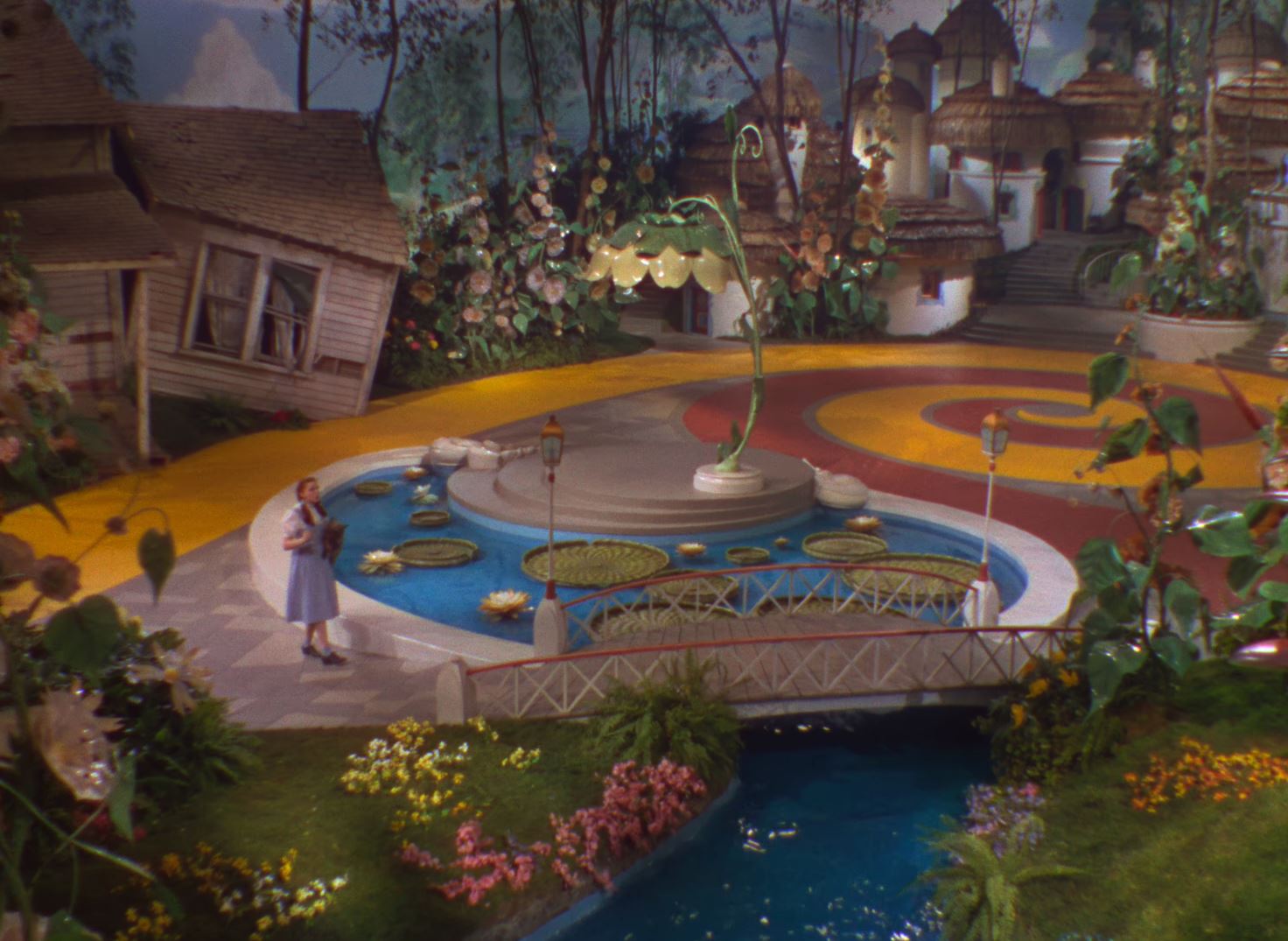 101min. MGM. Victor Fleming was the primary director, with 9 days of early shooting from Richard Thorpe, brief leadership by George Cukor, and finishing work from King Vidor who took over when Fleming hastily replaced Cukor in Gone with the Wind! Available for purchase on YouTube.
101min. MGM. Victor Fleming was the primary director, with 9 days of early shooting from Richard Thorpe, brief leadership by George Cukor, and finishing work from King Vidor who took over when Fleming hastily replaced Cukor in Gone with the Wind! Available for purchase on YouTube.
Other film(s): Gulliver’s Travels (76min. Dave Fleischer. Fleischer Studios in Miami, FL. Distributed by Paramount, Hollywood, USA.) The first non-Disney animated feature film. A childhood favorite of mine, highlighting the unique style of the Fleischer brothers (who were also noted in 10Y10F Part 4 with the 1919 short “The Tantalizing Fly”).
World events in 1939: African-American singer Marian Anderson performs before 75,000 people at the Lincoln Memorial in Washington, D.C. Billie Holiday records “Strange Fruit.” 1939-1940 New York World’s Fair opens; the new nylon fabric is popularized in women’s leggings; Westinghouse buries a time capsule to remain closed until 6939. LaGuardia Airport opens in NYC. GM’s Hydra-Matic drive is the first mass-produced automatic transmission. The three-year Spanish Civil War comes to an end, with the right-leaning Nationalists coming to power and Francisco Franco as dictator until his death in 1975. Germany invades Poland to start World War II. Births: English actor Ian McKellen. Francis Ford Coppola. Peter Bogdanovich. Wes Craven. Lily Tomlin.
1940 – You’re Missing the Point (Bustillo Oro; Mexico)
A bum (Catinflas) is treated as a king in a mixup when a rich man thinks he can get his inheritance with the help of Catinflas. Mexican cinema flourished in the 1940s and this comedy starring Mario Moreno was so popular that he used Catinflas as his stage name ever since. Expand
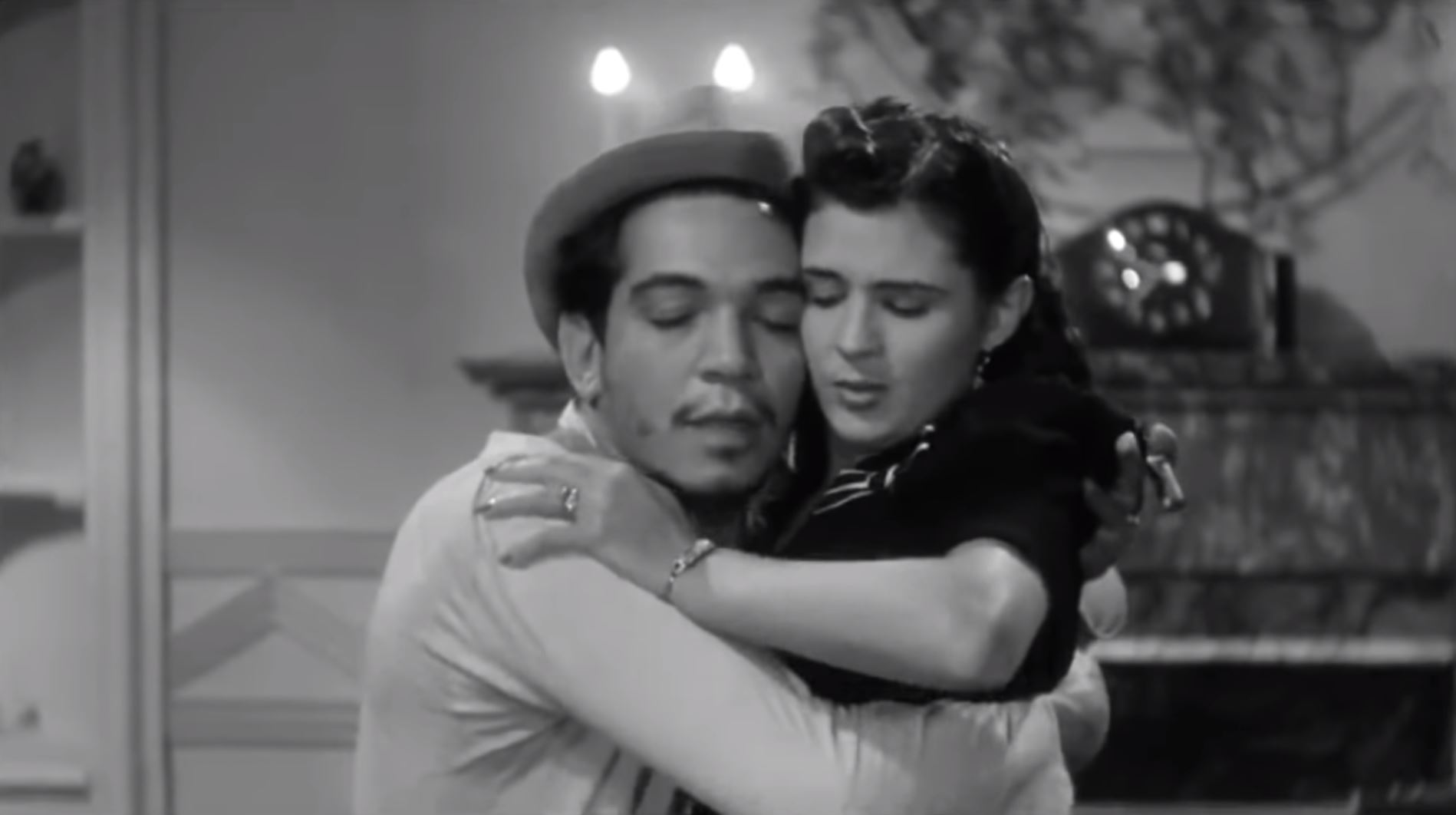 Ahí está el detalle. 109min. Juan Bustillo Oro. Grovas-Oro Films. (Another example of a world-renowned classic currently hard to find in a decent home video release.)
Ahí está el detalle. 109min. Juan Bustillo Oro. Grovas-Oro Films. (Another example of a world-renowned classic currently hard to find in a decent home video release.)
Other film(s): Fantasia [clip] (124min. Burbank, USA.) This animated feature combines classical music masterpieces with imaginative visuals, presented with Leopold Stokowski and the Philadelphia Orchestra. The eight animation sequences are colorful, impressive, free-flowing, abstract, and often surrealistic pieces. They include the most famous of all, Paul Dukas’s “The Sorcerer’s Apprentice” with Mickey Mouse as the title character battling brooms carrying endless buckets of water. The Disney empire was well established by 1940. I bring attention to Fantasia due to the “Fantasound” pioneering stereo sound system that was installed in theaters used solely for this film. Disney wanted to simulate the experience of a live symphony for this film. It is the earliest commercial use of stereo sound in the long era of mono films. It would be another 13 years before stereo technology finally saturated the market. Available for purchase on YouTube.
The Great Dictator [trailer] (125min. Charles Chaplin Film Corporation/United Artists. Hollywood, USA.) Dictator Adenoid Hynkel tries to expand his empire while a poor Jewish barber tries to avoid persecution from Hynkel’s regime. This is my favorite Chaplin film, his first with sound, which brilliantly parodies Adolf Hitler and the Nazi party and was released partly as a plea for Americans to avoid entering WWII. The final speech is an unforgettable moment.
World events in 1940: Hemmingway’s For Whom the Bell Tolls published. The first modern highways, the Pennsylvania Turnpike and the Arroyo Seco Parkway from LA to Pasadena, open to the public. Lascaux becomes the last-discovered and most exceptional cave art of the Vézère Valley of France; dating to around 17,000 years old. Alan Turing’s “bombe” machines successfully break 178 German Enigma messages. Births: Chuck Norris. Al Pacino. Patrick Stewart. Bruce Lee. Richard Pryor. Raquel Welch. Dionne Warwick. Brian De Palma. Terry Gilliam. John Lennon.
1941 – Citizen Kane [opening scene] (Welles; USA)
Following the death of publishing tycoon Charles Foster Kane, reporters scramble to uncover the meaning of his final utterance, “Rosebud.” Almost exactly 80 years later, Orson Welle’s first film at the age of 25 remains at the top of many critics’ lists of the all-time greatest. While I find the history around the film and filming techniques to be fascinating, I find it to be overrated. I’m including it here not just because of its notoriety, but it illustrates the enormous mistrust of the press in the early 1940s – a theme you’ll notice in many films of this era. Expand
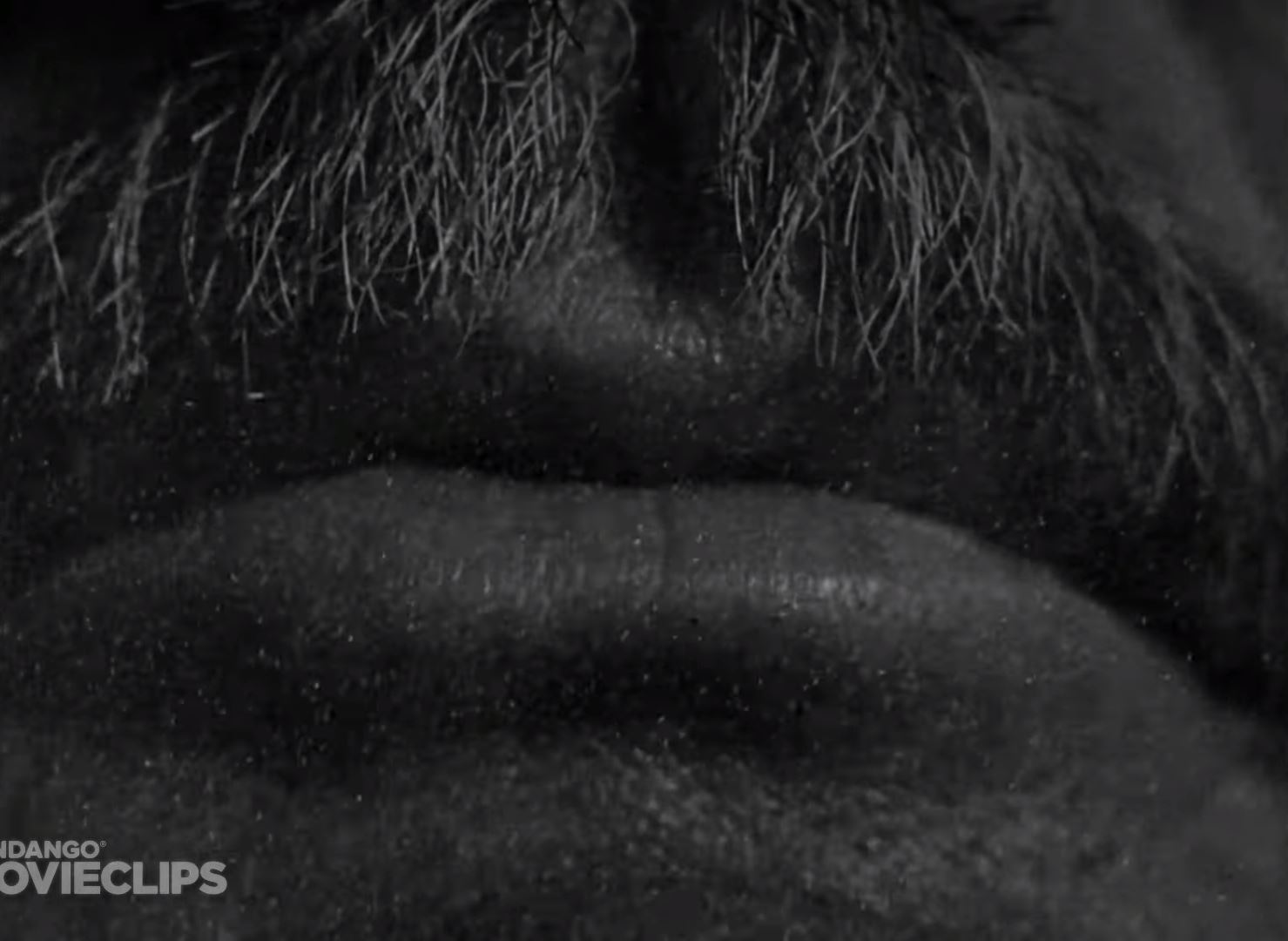 119min. RKO. Hollywood, CA. Available for purchase on YouTube.
119min. RKO. Hollywood, CA. Available for purchase on YouTube.
Other film(s): Sullivan’s Travels [trailer] (90min. Paramount.) A meta satire about a famous Hollywood director (Joel McCrea) who, longing to make a socially relevant drama, sets out to live as a vagrant drifter to gain life experience for his forthcoming film, and unites with a poor aspiring actress along the way. “The Girl” is Veronica Lake’s first starring role, and the film’s poster highlighted her iconic blonde hair. Preston Sturges was one of the first director/writers in Hollywood and this film was produced at the height of his popularity.
Homeless Angel [clip] (aka Angels on the Street or Jibeopneun cheonsa. Korea. 73min.) The contemporary story of two orphan siblings as they navigate their childhood in Japanese-occupied Korea. Directed by In-kyu Choi but screenplay by Motosada Nishiki who injected plenty of colonial Japanese propaganda into the writing.
World events in 1941: USO Camp Shows begin as a service to entertain American troops. W47NV in Nashville, TN, becomes the first fully-licensed FM radio station. Ansel Adams snaps the famous photo called Moonrise, Hernandez, New Mexico. Joe DiMaggio’s 56-game hitting streak ends. Births: Japanese filmmaker Hayao Miyazaki. Italian filmmaker Bernardo Bertolucci. Indian actor Asrani. Faye Dunaway. Nora Ephron. Nick Nolte.
1942 – Aniki Bóbó [clip] (Oliveira; Portugal)
A love triangle involving a gang of young children. A unique work of art for its time, preceding the “Italian neorealism” era by a year. Expand
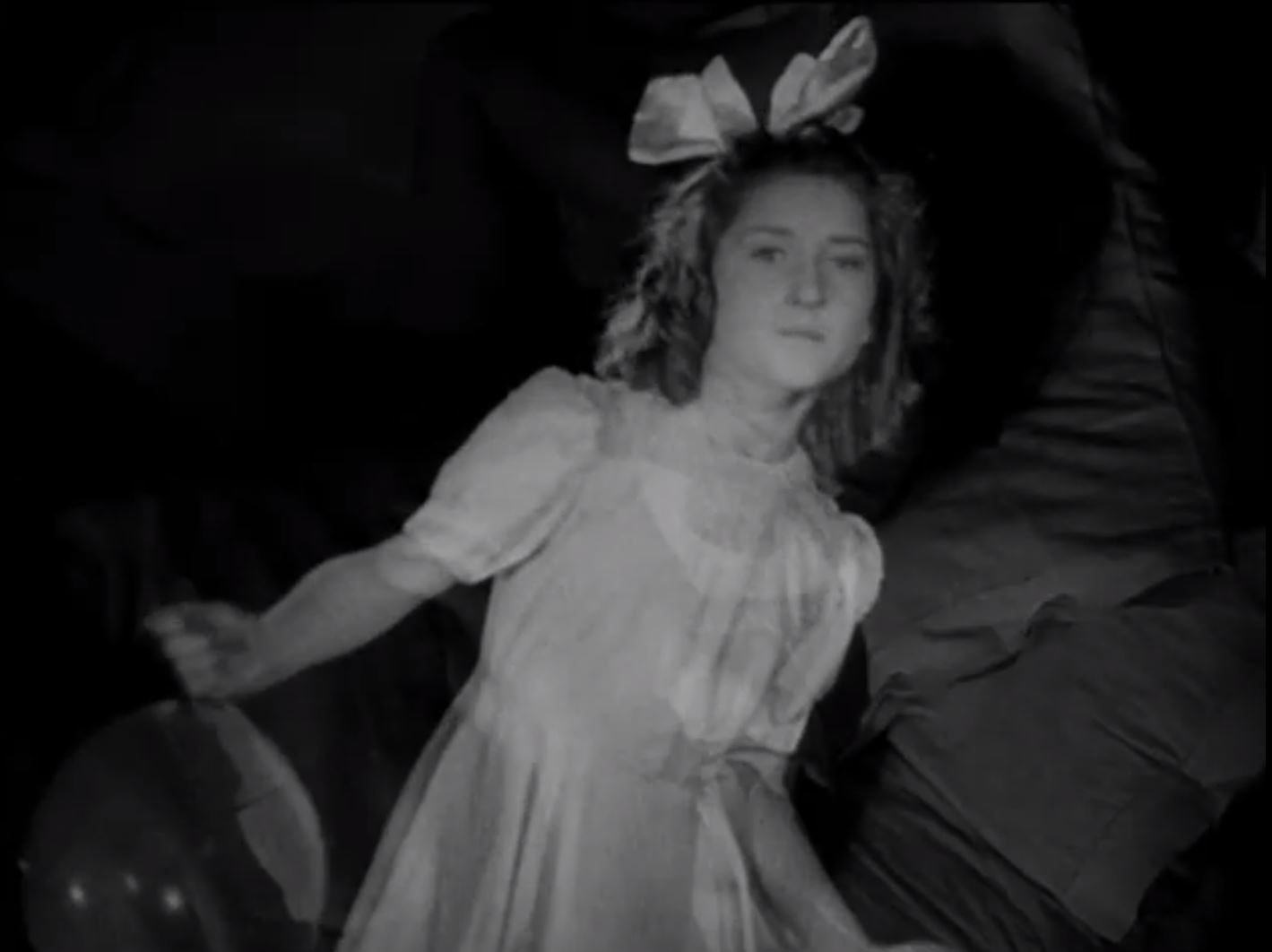 71min. Produções António Lopes Ribeiro. Director Manoel de Oliveira.
71min. Produções António Lopes Ribeiro. Director Manoel de Oliveira.
Other film(s): Casablanca [clip] (102min. Michael Curtiz. Warner Brothers, Hollywood, USA.) A cynical expatriate American cafe owner (Humphrey Bogart) struggles to decide whether or not to help his former lover (Ingrid Bergman) and her fugitive husband (Paul Henreid) escape the Nazis in French Morocco. While Citizen Kane may be considered one of the “greatest” films, Casablanca is probably the most “loved.” Warner Brothers was heavily involved in wartime propaganda, and this film was no exception. The film’s success was a perfect storm of elements – Bob Strauss wrote for the LA Times that the film achieved a “near-perfect entertainment balance” of comedy, romance, and suspense. Available for purchase on YouTube.
The Gaucho War (La guerra gaucha. 90min. Lucas Demare. Artistas Argentinos Asociados, Argentina.) The story of the irregular forces in the north of Argentina, in 1817, fighting against the Spanish Crown for the independence. Winner of the first Silver Condor award and one of the most successful Argentine films of all time.
World events in 1942: The R-4 becomes the world’s first mass-produced helicopter. The Grand Coulee Dam is completed in Washington. June 12th, Anne Frank makes her first diary entry on her birthday. DDT is first used as a pesticide, during WWII to control the spread of typhus. Carole Lombard and 21 others die in a DC-3 commercial flight crash. Births: Indian actor Ravi Kapoor “Jeetendra.” Isaac Hayes. Barbara Streisand. Harrison Ford. Martin Scorsese. Roger Ebert.
1943 – Meshes of the Afternoon (Deren; USA)
A woman returning home falls asleep and has vivid dreams that may or may not be happening in reality. Through repetitive images and complete mismatching of the objective view of time and space, her dark inner desires play out on-screen. Originally a silent film, Maya Deren directs and stars in this experimental short. See my full review on Letterboxd. Expand
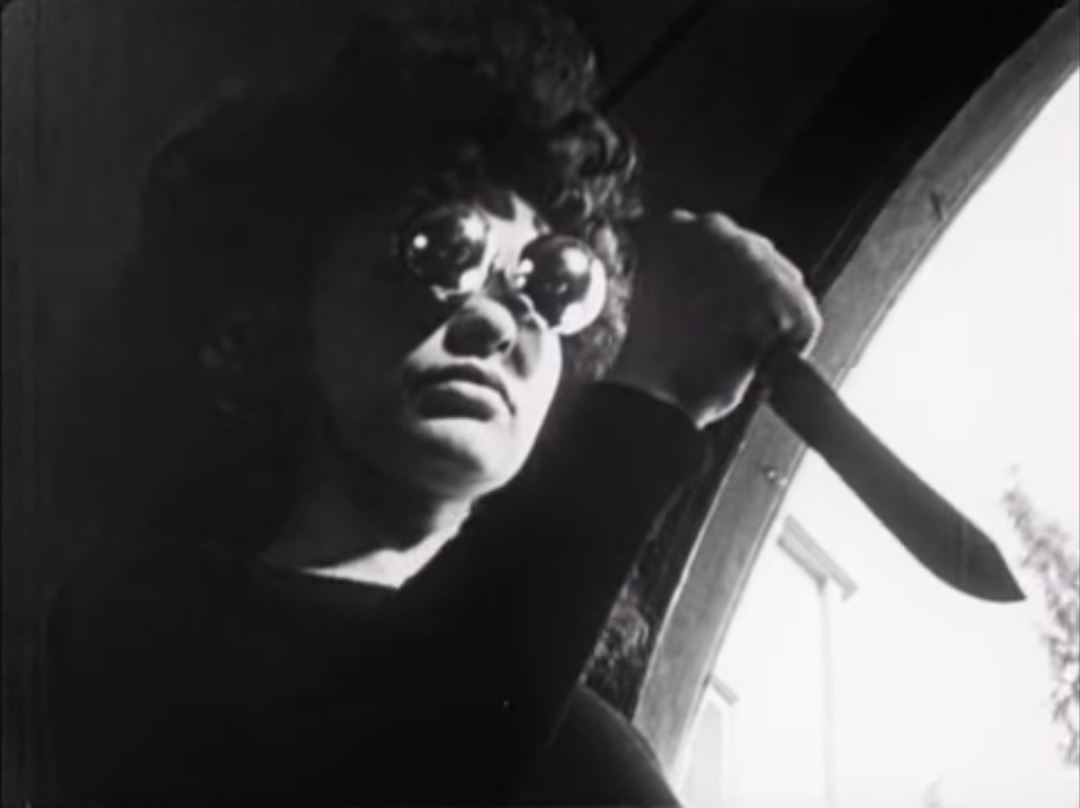 14min. Co-directed by her husband Alexander Hammid.
14min. Co-directed by her husband Alexander Hammid.
Other film(s): Stormy Weather [clip] (78min. Andrew L. Stone. 20th Century Fox, Hollywood, USA.) The relationship between an aspiring dancer and a popular songstress provides a retrospective of the great African American entertainers of the early 1900s. One of the few films of the era with a mostly-African American cast, Bill “Bojangles” Robinson plays himself as “Mr. Bill” Williamson in this loose biopic. Also starring Lena Horne, Cab Calloway, and the incredible Nicholas Brothers in one of the greatest dance scenes ever put to film. See also Cabin in the Sky from the same year. Available for purchase on YouTube.
This is the Army [public domain] (121min. Michael Curtiz. Technicolor. Warner Brothers, Hollywood, USA.) A soldier wounded in the War (WWI) becomes a producer and stages a show for the forces. Adapted from the 1942 Broadway musical and the top-grossing film of 1943. An impressive cast, such as Joan Leslie, Ronald Reagan, George Murphy, boxer Joe Louis, Kate Smith, and Irging Berlin who wrote the music for the play and film. Many of the actors and crew were WWII army vets.
World events in 1943: Germany admits defeat for the first time, after more than five months in the Battle of Stalingrad. The Pentagon building is dedicated, the world’s largest office building. Exiled French aviator Antoine de Saint-Exupéry publishes The Little Prince. Norman Rockwell’s “Rosie the Riveter” appears on the cover of The Saturday Evening Post. Birome ballpoint pens patented in Argentina. Births: Christopher Walken. David Cronenberg. Robert De Niro. Penny Marshall. Randy Newman. Catherine Deneuve.
1944 – The Uninvited [trailer] (Allen; USA)
A composer and his sister discover that the reason they are able to purchase a beautiful gothic seacoast mansion very cheaply is the house’s unsavory past. Filmed and produced in Hollywood, but set in England and directed by Englishman Lewis Allen. As a whole, the film is largely forgotten, but it was a hit when it was released and made Gail Russell and overnight star. It is one of several films of the era with coded lesbian figures – for more on this, read Michael Koresky’s article and my list of queer films and directors from this decade. Expand
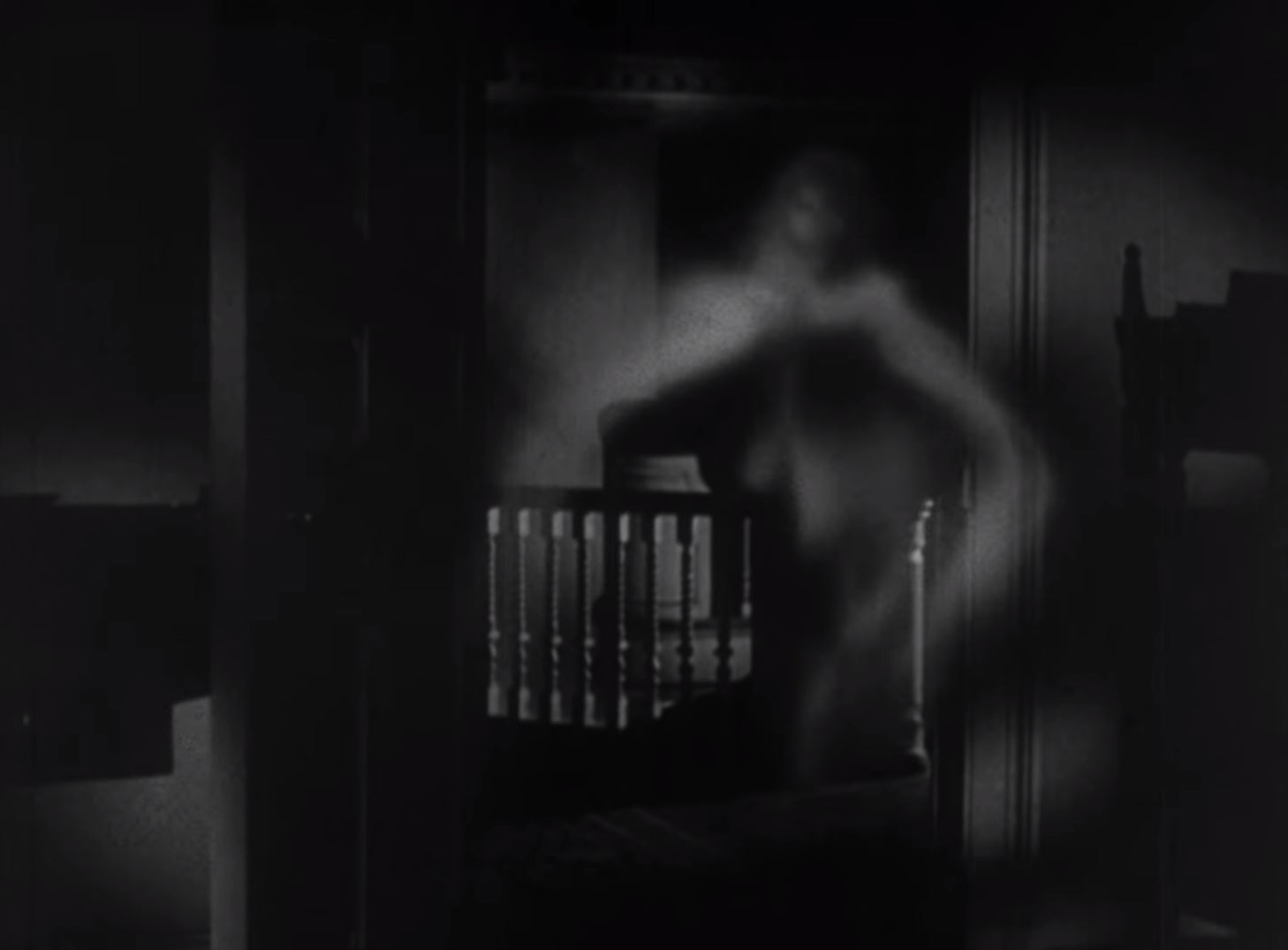 99min. Paramount, Hollywood, USA.
99min. Paramount, Hollywood, USA.
Other film(s): María Candelaria (Xochimilco) (97min. Emilio Fernández. Films Mundiales, Mexico.) A young journalist asks an old artist about the portrait of a naked Indian woman that he has in his study. The artist tells the story of Maria Candelaria in 1909, a young Indian woman who was rejected by her own people for being the daughter of a prostitute. She is protected by a young Indian man, Lorenzo Rafael, who has fallen in love with her. Stars Dolores del Rio, Mexican bombshell. One of several Palm d’Or winners in the first Cannes film festival of 1946.
World events in 1944: Sweden decriminalizes homosexuality (after Denmark in 1933, Iceland 1940, and Switzerland 1942). June 6th: D-Day in Normandy, France. August 4th: The Gestapo finds Anne Frank and her family. The Smokey Bear forest fire prevention campaign begins. Births: Diana Ross. Rutger Hauer. George Lucas. Geraldine Chaplin.
1945 – Rome, Open City [trailer] (Rossellini; Italy)
During the Nazi occupation of Rome in 1944, the Resistance leader, Giorgio Manfredi, is chased by the Nazis as he seeks refuge and a way to escape. This is the first of what is now called Roberto Rossellini’s “Neorealist Trilogy,” which dramatized the atrocities of WWII. Like Children of Paradise in France the same year, it was produced under extremely difficult wartime conditions. Expand
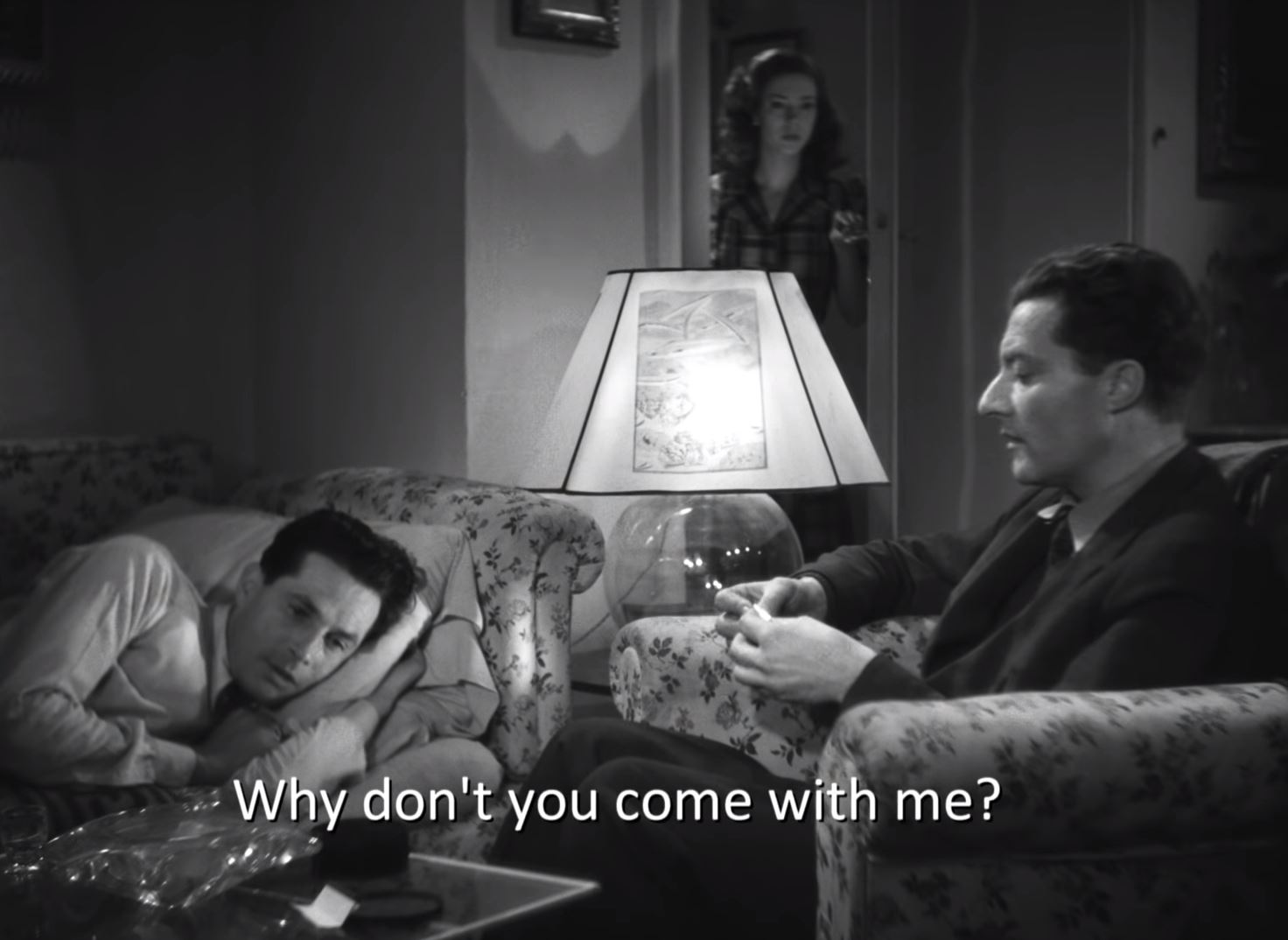 103min. Excelsa/Minerva production companies, Rome, Italy. Available for purchase on YouTube.
103min. Excelsa/Minerva production companies, Rome, Italy. Available for purchase on YouTube.
Other film(s): Brief Encounter [trailer] (86min. David Lean. London, England.) Meeting a stranger (Trevor Howard) in a railway station, a woman (Celia Johnson) is tempted to cheat on her husband. This is a personal favorite of mine from the era, primarily because I’ve always loved Sergei Rachmaninoff’s Piano Concerto No. 2, which is used as the film’s score.
The Battle of San Pietro [public domain] (32min. John Huston. Army Pictorial Service, USA.) The 2nd of 3 controversial documentary shorts that Huston directed for the War Activities Committee of the Motion Picture Industry, this one depicting the December 1943 battle near Naples, Italy. While Huston’s films were considered propaganda, they were nothing compared to a 7-part series from the Office of War Information called “Why We Fight,” led by Frank Capra.
World events in 1945: The 30-ton ENIAC goes online, the first general-purpose digital computer. April 30: Adolf Hitler and his wife of one day, Eva Braun, commit suicide. May 7: Nazi Germany surrenders. August 6 & 9: Atomic bombs result in 129k to 246k deaths. August 14-15 official Japanese surrender. The United Nations is formed, with 51 member states. Births: Ernie Hudson. Mia Farrow. George Miller. Helen Mirren. Goldie Hawn.
1946 – The Lady’s Puppet [clip] (Sameh; Egypt)
The film takes place in the city of Cairo during the Second World War, when Hasan Abu-Tabaq (Nagib El-Rihani) meets the girl Libah (Tahiyyah Karyuka). Feelings of love grow between them while Hasan struggles to find work. But things change little by little as a great opportunity looms for Libah to become a movie star. One of the many adaptations of the 1898 novel by Pierre Louÿs, The Woman and the Puppet. Tahiya Carioca (spelled multiple ways) was a famous Cairo nightclub belly dancer, so she was perfect for the role of Libah. Check out this tribute to her dance scenes in films throughout the years. Expand
 لعبة الست or Labat el-Sitt. 100min. Studio Nahas, Cairo, Egypt.
لعبة الست or Labat el-Sitt. 100min. Studio Nahas, Cairo, Egypt.
Other film(s): Neecha Nagar (Lowly City. 122min. Chetan Anand. India Pictures studio, Bombay? India. Hindi.) Wealthy landlord Sarkar decides to direct all waste into the village to make space for his real estate project. However, the poor villagers agitate against his plan and the protest is led by Balraj. The film was based on a Hindi story, Neecha Nagar, written by Hayatullah Ansari, which in turn was inspired by Russian writer Maxim Gorky’s The Lower Depths. This was an early film of the “Parallel Cinema” movement in India, inspired by Italian Neorealism. It shared the Palm d’Or in the first Cannes film festival of 1946.
It’s a Wonderful Life [trailer] (130min. Frank Capra. RKO. Hollywood, USA.) George Bailey has spent his entire life giving to the people of Bedford Falls. All that prevents rich skinflint Mr. Potter from taking over the entire town is George’s modest building and loan company. But on Christmas Eve the business’s $8,000 is lost and George’s troubles begin. This may be the all-time favorite Christmas movie, starring Jimmy Stewart and Donna Reed. Originally in black and white, there have been three “colorized” versions of the film since 1986. Available for purchase on YouTube.
World events in 1946: The Central Intelligence Agency is formed, primarily due to tensions with the USSR. The bikini bathing suit is introduced, 4 days after the first public nuclear bomb test at the Bikini Atoll. Births: Danny Glover. Diane Keaton. Dolly Parton. David Lynch. Cher. Sylvester Stallone. Steven Spielberg.
1947 – The Spring River Flows East (Cai & Zheng; China)
1930’s China. The village of a poor family is taken over by the occupying Japanese army. One son, Zhongliang, leaves his wife and young son to join a medic group for the Chinese Army. The other son, Zhangmin goes into hiding to protect his family. The focus shifts back and forth from the brothers’ parents and Zhongliang’s wife and son to Zhongliang’s newfound life of luxury in a town not too far away. A major Chinese epic, released in 2 parts (Eight War-Torn Years and The Dawn). I highly recommend Christopher Rea’s “Chinese Film Classics” free online course, where this film is highlighted, among many others. Rea is a professor of Modern Chinese Literature at the University of British Columbia. Expand
 A.k.a. Tears of the Yang-Tse (一江春水向東流). 192min. Directors Chusheng Cai & Junli Zheng. Kunlun Film Company. Shanghai? China.
A.k.a. Tears of the Yang-Tse (一江春水向東流). 192min. Directors Chusheng Cai & Junli Zheng. Kunlun Film Company. Shanghai? China.
Other film(s): Fireworks [incomplete version] (20min. Independently produced in Beverly Hills, USA.) Fireworks revolves around a young man (played by Anger himself at the age of 17) associating with various navy sailors, who eventually turn on him, stripping him naked and beating him to death, ripping open his chest to find a clock ticking inside. Several fireworks then explode, accompanied by a burning Christmas tree and the final shot shows the young man lying in bed next to another topless man. Kenneth Anger was way ahead of his time and he made fearless queer (or occultish) short films.
Black Narcissus [trailer] (100min. Michael Powell & Emeric Pressburger collaborated on 24 films, usually taking writer/director/producer credits as The Archers. General Film Distributors/MGM/Universal, London, England. Technicolor.) A group of nuns struggle to establish a convent in the Himalayas, while isolation, extreme weather, altitude, and culture clashes all conspire to drive the well-intentioned missionaries mad. The film stars Deborah Kerr, Sabu, David Farrar, Jean Simmons, and Kathleen Byron. Oscars were awarded to Jack Cardiff for Best Color Cinematography and Alfred Junge for Best Color Art Direction. It is viewed as one of the earliest erotic films.
Bonus: President Harry S. Truman’s Speech “A Fateful Hour” (transcript)
World events in 1947: Indian independence from the British displaces millions during the partition into Pakistan and India, with hundreds of thousands killed in the process; women gain the right to vote in the constitutions of both new dominions. The first round of Hollywood blacklists begins after Congress identifies Communist-friendly filmmakers. Jackie Robinson becomes first African-American to play Major League Baseball. Chuck Yeager becomes first person to break the sound barrier in the Bell X-1 airplane. Births: David Bowie. Farrah Fawcett. Rob Reiner. Arnold Schwarzenegger. Stephen King.
* DISCLAIMERS
As of 2021, most American films made after 1925 are not in the public domain, so for the rest of the 10Y10F Series, full-versions of films will be harder to come by on YouTube.
Other than a couple of classes in college involving film, I fully admit to having no professional training in cinema history. Please let me know if any corrections need to be made, or if you have any other feedback. I usually respond pretty quickly to comments on this site.
YouTube playlist: 10Y10F Part 6: 1938-1947
10Y10F Series:
I 1888-1897, II 1898-1907,
III 1908-1917, IV 1918-1927,
V 1928-1937, VI 1938-1947,
VII 1948-1957…